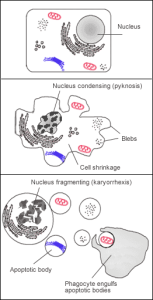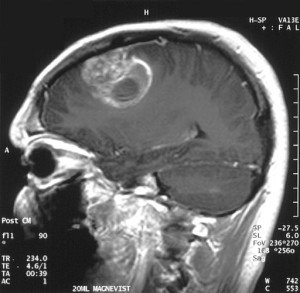 Social media tends to be a bit hasty when reporting on the purported validity of natural remedies for a variety of human ills, which is why we are not surprised that many already believe that Cannabis cures cancer.
Social media tends to be a bit hasty when reporting on the purported validity of natural remedies for a variety of human ills, which is why we are not surprised that many already believe that Cannabis cures cancer.
In reality, while Cannabis’ use to treat chemotherapy-induced vomiting/nausea is beyond reproach, unfortunately, there is just not enough information today for any credible medical expert to say that Cannabis can treat cancer.
However, the research to date is very promising.
Below we summarize the current state of Cannabis at it relates to potential cancer treatments. The first part of this article examines the discoveries made in the laboratory; the second part address the only clinical (human) trial conducted to date.
In the Lab: Pre-Clinical Cannabis Cancer Research
It’s not surprising that virtually all of the research to date concerning marijuana’s potential for the treatment of cancer would arise from animal and in vitro studies.
Mice, while cute, are definitely preferable to humans as far as testing novel hypotheses. Even better, why put a mouse’s life in danger when you can simply grow cancer cells on a plate of agar and then annihilate them? Of course, the big downside under either scenario is that there is only so much you can glean from laboratory data. What works for the mouse may not for the human.
Now that we’ve gotten that disclaimer out of the way, the animal models do strongly suggest possible cancer-killing properties of THC and other cannabanoids.
Killing Cancer Cells Through “Apoptosis”
 One reason why cannabanoids are believed to harbor anti-tumor properties is because they have been found to target and cause cancer cells to die naturally. What do I mean, “naturally”?
One reason why cannabanoids are believed to harbor anti-tumor properties is because they have been found to target and cause cancer cells to die naturally. What do I mean, “naturally”?
Cannabanoids are are believed to selectively target cancer cells and cause them to die through “apoptosis” – a biochemical cascade that results in what’s called Programmed Cell Death (“PCD”). Compared to zapping cells with chemicals, radiation or otherwise causing them physical injury, PCD is a much cleaner, natural way to deal with unwanted cells in the body.
For example, all human fetuses actually start with webbed feet; it is through apoptosis that the cells between the fetal digits are removed. Moreover, PCD also makes the waste products of the dead cells easier for the body to purge. Rather than having bits of blasted cellular matter left in the body, which itself can cause a whole host of problems, PCD results in innocuous cellular fragments – “apoptotic bodies” – that phagocytic immune response cells can easily engulf and digest before they can disturb surround tissues.
Inhibition of Angiogenesis, Cell Division & Metastasis
Another way THC may kill cancer is by preventing angiogenesis.
A tumor, once malignant, transforms into an extraordinarily fast-growing mass of tissue. Unlike normal cells and benign tumors, whose growth is limited by natural inhibitory mechanisms, a tumor is a problem precisely because its cells are dividing and growing out of control.
But how does cancer avoid these “normal biological cues” – how does it get out of control in the first place? There are many points of potential regulatory escape, but one of the first and most crucial steps is by triggering the otherwise normal process of angiogenesis, which is the process whereby growing tissues initiate the development of blood vessels necessary to sustain and maintain the tissues’ growth.
This is such a pivotal point in a tumor’s switch to malignancy because of cancer’s extremely rapid rate of growth. As the mass enlarges, it needs an equally-aggressive network of blood vessels to keep up with it, to supply the necessary food and oxygen to fuel its development.
Thus, just like normal organs and tissues, a malignant tumor relies on angiogenesis, but in the case of cancer the vasculature is used to feed the tumor’s insatiable appetite.
This is where Cannabis comes in. Researchers have found that cannabinoids block key factors (precursors) needed to successfully induce angiogenesis. And by cutting off a tumor’s blood supply, you can effectively starve it or at least suspend its growth.
In addition to going after its blood supply, cannabinoids have also been found effective at inhibiting cell division within the tumor, as well as impeding the spread of cancer cells that otherwise might form new, distant malignancies.
Concerns & Contrary Findings
Although the laboratory data are generally encouraging, not all of the research is, and some studies remind that there is still much to learn before cannabinoids can be widely used on cancer patients. For instance, some researchers have found that treatment with cannabinoids can actually spur cancer growth or, in other cases, compromise the immune system such that it is less able to detect and rid the body of would-be cancers.
Also, it should be added that laboratory studies typically work with highly-purified samples of THC and other cannabinoids. This may be considerably different than the highly variable doses and proportions of these chemicals (particularly relative to other endogenous cannabanoids not tested) that one would receive from smoking marijuana.
Human Trials: Clinical Research to Date
 So far, there has been just one human trial published: a pilot phase 1 trial conducted in Spain on nine patients with late-stage recurrent glioblastoma, a very aggressive type of brain cancer. Notably, the THC in this study was introduced to the patients’ tumors directly via a catheter, something the researchers opted for in part because it was consistent with their previous preclinical work with rodent models.
So far, there has been just one human trial published: a pilot phase 1 trial conducted in Spain on nine patients with late-stage recurrent glioblastoma, a very aggressive type of brain cancer. Notably, the THC in this study was introduced to the patients’ tumors directly via a catheter, something the researchers opted for in part because it was consistent with their previous preclinical work with rodent models.
Unfortunately, consistent with this type of very fast, lethal cancer, all of the patients deceased within 24 weeks of THC administration. However, the data showed that all but one of the patients did show some measure of improvement during the study. In addition, testing performed on samples of the patients’ biopsied tissue did confirm that the THC inhibited the proliferation of cancer cells consistent with preclinical animal testing.
While the data leaves lots of open questions, the study achieved two important goals, namely: 1) it demonstrated that intracranial THC administration was safe; and 2) refuted the alternative theory that THC might promote tumor growth rather than curb it. In fact, the cancer-killing effects observed here are consistent with the absence of a cancer link for even heavy pot smokers noted by researchers elsewhere.
This is very promising research – even more so when you consider this study’s major limitations:
- each of the patients had already undergone surgery and chemotherapy, and their tumors were already large and advanced; treatment of newly-detected cancers could possibly yield much better outcomes;
- the sample size of the patients was too small to draw conclusions about relative survival rates compared to traditional therapies;
- the researchers acknowledged that their use of direct (surgical) administration of THC to the tumors may have been limiting; they noted that systemic administration would be less invasive, more practical, and potentially more effective at delivering THC to large tumors.
Cannabis and Cancer – The Tentative Verdict
Based on the solid record of animal-model research to date, and the encouraging clinical trial, even the most critical healthcare providers would likely agree that THC and other cannabinoids show great promise as a potential cancer treatment.
Nevertheless, the reality is that we are still just beginning to understand how cannabinoids work in various clinical contexts, and therefore how they can be used effectively. In other words, while there is good reason to be hopeful, we still have a way to go before determining whether THC provides an effective treatment, much less declaring that Cannabis cures cancer.
Sources:
http://www.nature.com/bjc/journal/v95/n2/full/6603236a.html
Image Credits:
O’Dea at WikiCommons under CC BY-SA 3.0







